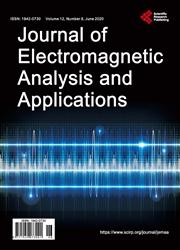Remarkable Predictions of Classical Electrodynamics on Elementary Charge and the Energy Density of Vacuum
引用次数: 3
Abstract
In a recent paper, we have studied the nature of the electromagnetic energy radiated over a single period of oscillation by an antenna working in frequency domain under ideal conditions and without losses when the oscillating charge in the antenna is reduced to the elementary charge. Here we extend and expand that study. The energy radiated by an oscillating current in an antenna occurs in bursts of duration T/2, where T is the period of oscillation. The results obtained here, based purely on classical electrodynamics, can be summarized by the inequality U ≥hv→q0 ≥e where U is the energy radiated in a single burst of duration T/2, h is the Planck constant, ν is the frequency of oscillation and q0 is the magnitude of the oscillating charge associated with the current. The condition U=hv→q0=e is obtained when the length of the antenna is equal to the ultimate Hubble radius of the universe (i.e. the maximum value of the antenna length allowed by nature) and the wavelength is equal to the Bohr radius (resulting from the smallest possible radius of the conductor allowed by nature). The ultimate Hubble radius is directly related to the vacuum energy density. The inequality obtained here is in general agreement with the one obtained in the previous study. One novel feature of this extended analysis is the discovery of an expression, in terms of the elementary charge and other atomic constants, for the vacuum energy density of the universe. This expression predicts the vacuum energy density to be about 4×10-10 J/m3 which is in reasonable agreement with the measured value of 6×10-10 J/m3.经典电动力学对基本电荷和真空能量密度的重要预测
在最近的一篇论文中,我们研究了在理想条件下,当天线中的振荡电荷减少为基本电荷时,在频域中工作的天线在单个振荡周期内辐射的电磁能的性质。在这里,我们扩展了这项研究。天线中振荡电流辐射的能量以持续时间为T/2的突发出现,其中T是振荡周期。这里得到的结果,纯粹基于经典电动力学,可以用不等式U≥hv来概括→q0≥e,其中U是在持续时间为T/2的单个突发中辐射的能量,h是普朗克常数,Γ是振荡频率,q0是与电流相关的振荡电荷的大小。条件U=hv→当天线的长度等于宇宙的最终哈勃半径(即自然界允许的天线长度的最大值),并且波长等于玻尔半径(由自然界允许的导体的最小可能半径产生)时,q0=e得到。哈勃的最终半径与真空能量密度直接相关。这里得到的不等式与先前研究中得到的不等式基本一致。这种扩展分析的一个新特点是发现了宇宙真空能量密度的基本电荷和其他原子常数表达式。该表达式预测真空能量密度约为4×。
本文章由计算机程序翻译,如有差异,请以英文原文为准。
求助全文
约1分钟内获得全文
求助全文

 求助内容:
求助内容: 应助结果提醒方式:
应助结果提醒方式:


